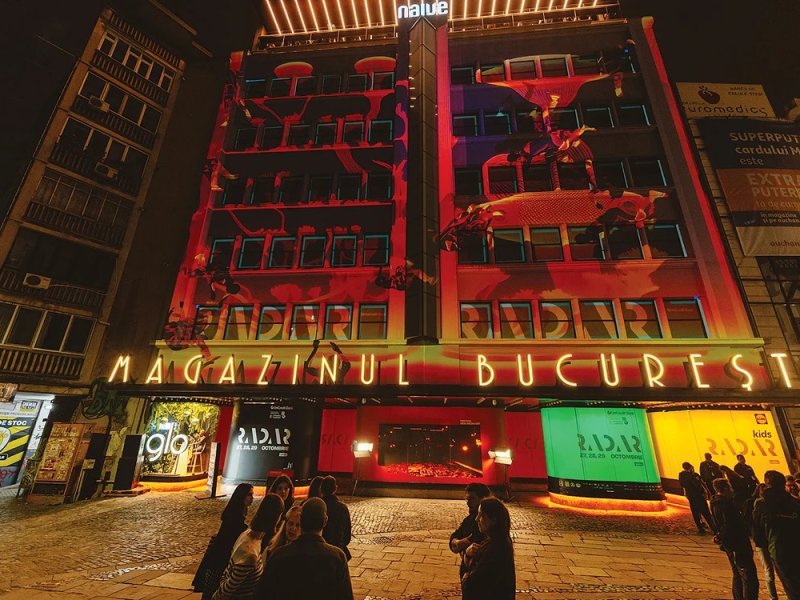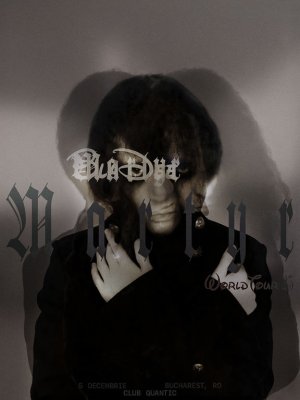The Story of Magazinul București: The Reinvention of a Historic Landmark in Bucharest’s Old Town After 90 Years

By Bucharest Team
- NEWS
- 22 JUL 25
Magazinul București, located in the very heart of the capital near Piața Roma, at the end of the historic Lipscani Street, is more than just a building. It is a chapter of urban and commercial history, rooted in the life of a remarkable man: Bucur Bunescu.
The story begins at the end of the 19th century, when a poor boy from Turcheș, a village near Brașov, arrived in Bucharest in search of a better life. He was only 12 years old when he was hired as a shop assistant at a textile store.
Young Bunescu quickly proved himself with an uncommon talent for commerce, earning the trust of his employer, Nicolae Popp. In 1900, the two became business partners and founded Popp & Bunescu, headquartered on Pânzari Street (now Șepcari Street). Their business expanded rapidly, and in 1929, they opened the store that would become a city icon: initially Popp & Bunescu, later known as Magazinul București.
From Popp & Bunescu to a Bucharest Commercial Landmark
The building was designed by architect M. Maller and erected in the former Piața Roma, then one of the busiest areas of the city. The store specialized in textiles, haberdashery, lingerie, carpets, and other handcrafted goods known at the time as "brașovenii"—a term for merchandise brought from the Brașov region, particularly from Scheii Brașovului.
The store became a resounding success and a favorite shopping destination for locals. However, in 1948, the communist regime nationalized all of Bucur Bunescu’s properties, including the store. It was renamed "Magazinul de Stat București" and continued to operate as a major commercial hub well after the 1989 Revolution.
During the communist era, the store functioned as a kind of pre-mall, offering everything from textiles and home goods to electronics. Although Bunescu lost everything he had built, the store managed to preserve much of its original purpose.
Bucur Bunescu’s Life and Legacy
Bucur Bunescu was not only a successful merchant but also a man known for his honesty, dignity, and integrity. After the death of his partner, Nicolae Popp, in the 1930s, Bunescu chose to keep the company name out of respect. Without biological children, he adopted a little girl named Rada in 1932 and left her his entire fortune.
In 1948, with the rise of communism, all of his assets were confiscated, including his villa on Kiseleff Boulevard. He was forced to live in a modest rented apartment. Still, he was spared imprisonment—a fate that befell many businessmen of his era.
Ironically, in 1962, then leader Gheorghe Gheorghiu-Dej offered him a position as economic adviser to the government. Bunescu firmly refused. He passed away in 1965, at the age of 89, leaving behind not only an inspiring life story but also a lasting symbol of Romanian entrepreneurship: Magazinul București.
Magazinul București in the Modern Era
After 1989, the building fell into disrepair and commercial activity ceased. In 2003, the majority share of SC București SA—the company that owned the property—was acquired by former Sector 5 mayor Marian Vanghelie. After years of legal battles, the building was returned in 2010 to Bucur Bunescu’s heirs.
In 2013, Dutch investors Gerard Heinen and Johannes Jozefus Maria Baakman purchased the property. By 2017, they had obtained a reconstruction permit, with renovation plans that include preserving the building’s original façade. The redesigned complex will feature five floors of retail, two floors of office space, and a rooftop restaurant. The total investment is estimated at €6 million.
A New Beginning, Rooted in the Past
The reconstruction of Magazinul București is more than a renovation—it is a symbolic act of historical recovery. The project is set to be completed by the end of this year, exactly 90 years after the building’s original inauguration, bringing new life to one of the most historic corners of Bucharest.
For many Bucharesters, the store is a deeply personal memory—a place tied to childhood, family shopping trips, and an era with few choices but many stories. For newer generations, it has the potential to become a landmark of reconnection—to both the past and the revival of commercial life in the Old City.


























